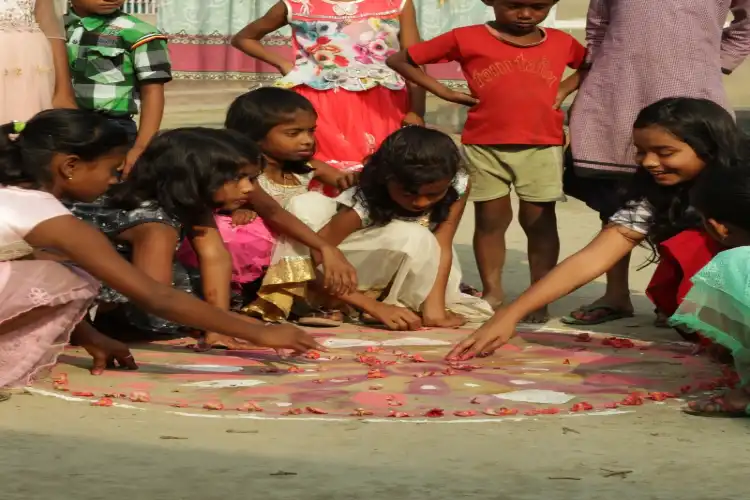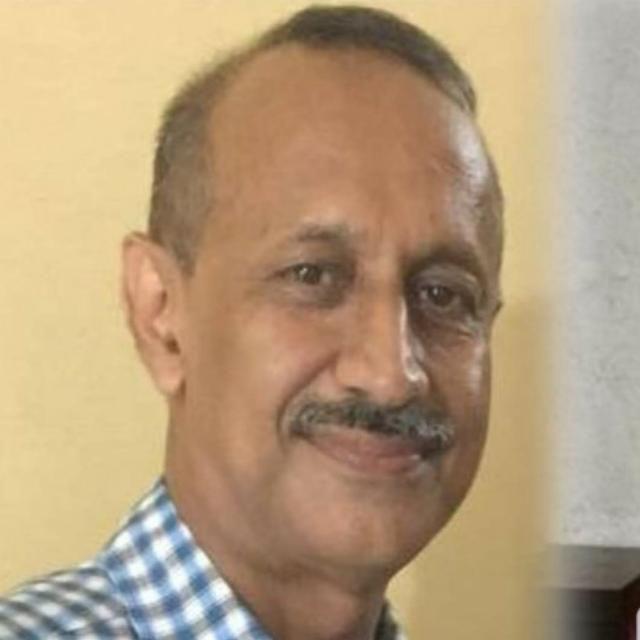
 Pallab Bhattacharyya
Pallab Bhattacharyya
Recently the following headlines appearing in newspapers and television channels indicated a major happening in Assam:
“15 suspected Jihadists were detained in the last 24 hours in Assam, 7 in Barpeta, 8 in Morigaon”
“Madrassa teacher among 10 al-Qaida members held in Assam"
“Read Quran Sharif to help keep brotherhood: Assam DGP to Jihadi-affected youths”
Assam where for every ten men there are four Muslims indicates the importance of this section of the population whose existence obviously cannot be ignored by anybody -be it a political leader or member of the Assamese society.
If we see the political history of Assam, it is found that after the demolition of Babri Majid on December 6, 1992, Muslim youths from Assam started going to Bangladesh and other countries to get radicalized and trained in warfare with the misplaced opinion of saving their community.
The Metei-Muslim conflict in Manipur in the year 1993 led to the organization of militant Muslim outfits like the People's Union of Liberation Front, better known as PULF. With the onset of globalization in the nineties, foreign radical thoughts started their ingress into the North East general and Assam in particular.
I as a youngster (sixties and seventies) grew up in the cosmopolitan town of Duliajan where we never grew up in such a tense and polarised atmosphere. In fact, we boasted of the syncretic Assamese culture of Srimanta Sankardev and Azan Fakir.
The recent arrests and raid in a Madrassa have thrown open the floodgates of speculations in social and print media about likely danger to the safety and security of Assam. The involvement of all Qaeda in the 1998 US Embassy bombings, 9/11 attacks, 2002 Bali bombings, etc indicates its presence in all these areas and prompted the USA to launch the “war on terror”.
However, affiliates closer to the organization are in sleeper cell mode in various parts of the world in general and India in particular. At the time of its formation in September 2014, Al-Qaeda in the Indian Subcontinent (AQIS) specifically listed Assam among the target for jihad, along with Gujarat and Jammu, and Kashmir.
The arrest of Islamist militants is, however, not a new phenomenon in Assam. The Khagragarh blast in West Bengal on October 2, 2014, and the unveiling of the surreptitious presence of the JMB Module in Assam are still fresh in the minds of the people. A long list of Islamist outfits had been operating in Assam since the 1990s. The rise of Islamist militancy started in North Eastern India in the wake of the 1992 Babri Masjid demolition and the subsequent communal disturbances; Manipur's infamous Meitei-Muslim riots in 1993 are also a contributing factor.
Pakistan's Inter-Services Intelligence (ISI) was relentless in its design to exploit India’s vulnerabilities and it received help from the Khaleda Zia regime in Bangladesh, which, at that time, was deeply hostile to India.
Bangladesh was a hotbed of Islamist radicalization and militancy then and it was used by ISI to extend its 4th Generation Warfare against India. However, the situation has changed dramatically in New Delhi’s favour since the Sheikh Hasina Government assumed office in 2009. However, there is no denial of the fact that in the present moment there are two Bangladesh -one based on Bengali Nationalism and the other identifying itself to the Islamic world and the constant tussle between the two has a spillover effect in Assam.
A majority of Islamic militant groups in the Northeast were founded between 1990 and 1996, with the proclaimed objective of ‘safeguarding' the overall interests of the minority Muslim communities in the region. More groups surfaced in the early 2000s, but these were short-lived.
Riots between Bodos and Bengali-speaking Muslims happened sporadically in BTAD and at that time the Central Government identified at least 19 Islamist organizations to watch in connection with violence in the State.
The subsequent advent of Kerala-based organization Popular Front of India (PFI) and its ingress into Goalpara, Karimganj, Silchar, Hailakandi, Kamrup, Barpeta, Baksa, Chirang, Kokrajhar, Dhubri, South Salmara, Lakhimpur, Nagaon, and Tinsukia Districts of Assam in the process of updating of NRC paved the ground for the germination of radicalization in Assam.
In the year 2016, a 'Handbook of Counter Radicalization' was published for the benefit of law enforcement officers in Assam as well as in India with the initiative of the Assam Police. This was followed up with another 'Handbook of Resurgent Radicalism in Assam' in 2019. The contribution by security experts Jaideep Saikia and the then Colonel Saubhagya Sarma in this enendeavor by Special Branch Assam police is memorable.
There is no denying the fact that the main driver of radicalization is the “Ideology”. The internet, social media, and in some cases the print media, some charity organizations, and NGOs contributed to its growth. It is strongly felt that instead of allowing a person to be “radicalized” first and then, on the discovery of the same, steps for his “de-radicalization” are taken, the better course of action will be to ensure “counter-radicalization”.
In other words, it's about creating an environment where radicalization cannot take place. It is clear that in the instant cases in Barpeta and Morigaon the arrested youths were radicalized by foreign thoughts that clash with the syncretic culture of Sankar-Ajan. The following steps may be initiated for implementation by Government in collaboration with society:
In the syncretism of Sankar-Ajan, a few steps could be initiated by the Government in collaboration with society:
Also Read: Is Habib Tanvir's legacy of blending folk and modern theater fading?
For successful implementation of the above measures, coordination of all agencies of Government, print and electronic media, and all sections of society will be necessary. Gaining the trust of the minority community is the essence of such a counter-radicalization policy. All round development in the sphere of education, health, and skill building of the Muslim community some of which are located in far-flung areas and difficult places like char and chapories will play a vital role in the eradication of these evils from society.
(Writer is a former Director-General of Police, Special Branch, and ex-Chairman, APSC. Views expressed by him are personal.)
